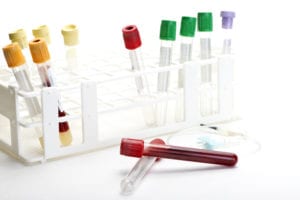Written by Angeline A. De Leon, Staff Writer. Three months of capsaicin supplementation significantly increased serum HDL-C levels and moderately reduced triglycerides, CRP and PLTP in participating volunteers compared to controls.
 Capsaicin, an active component of chili peppers, is associated with a wealth of health benefits, including anti-inflammatory effects and the improvement of vascular and metabolic health 1,2. Animal studies credit capsaicin with the lowering of plasma cholesterol and the prevention of arterial plaque formation 3,4, while emerging human trials indicate that capsaicin-containing chili may improve glucose and lipid profile in women with gestational diabetes 5. Although the exact mechanism underlying its lipid-lowering effects is still under investigation, research suggests that capsaicin may directly affect high-density lipoprotein cholesterol (HDL-C), altering serum levels of “good cholesterol” by influencing the inflammatory processes and proteins associated with HDL-C metabolism [cholesterylester transfer protein (CETP), phospholipid transfer protein (PLTP), and lecithin cholesterol acyltransferase (LCAT)] 6-8. Given the strong link between low levels of HDL-C and risk of coronary heart disease (CHD), investigating effective strategies for the management of HDL-C is a critical step in the prevention of cardiovascular disease. In a 2017 study published in Nutrients, researchers examined the efficacy of capsaicin supplementation in improving the serum lipid profile of individuals with low HDL-C.
Capsaicin, an active component of chili peppers, is associated with a wealth of health benefits, including anti-inflammatory effects and the improvement of vascular and metabolic health 1,2. Animal studies credit capsaicin with the lowering of plasma cholesterol and the prevention of arterial plaque formation 3,4, while emerging human trials indicate that capsaicin-containing chili may improve glucose and lipid profile in women with gestational diabetes 5. Although the exact mechanism underlying its lipid-lowering effects is still under investigation, research suggests that capsaicin may directly affect high-density lipoprotein cholesterol (HDL-C), altering serum levels of “good cholesterol” by influencing the inflammatory processes and proteins associated with HDL-C metabolism [cholesterylester transfer protein (CETP), phospholipid transfer protein (PLTP), and lecithin cholesterol acyltransferase (LCAT)] 6-8. Given the strong link between low levels of HDL-C and risk of coronary heart disease (CHD), investigating effective strategies for the management of HDL-C is a critical step in the prevention of cardiovascular disease. In a 2017 study published in Nutrients, researchers examined the efficacy of capsaicin supplementation in improving the serum lipid profile of individuals with low HDL-C.
The randomized, controlled, double-blind clinical trial involved a total of 35 volunteers (aged 30-50 years) with a fasting serum HDL-C lower than 1.03 mmol/L for men and 1.30 mmol/L for women. Participants were randomly assigned to ingest 4 mg of capsaicin or a control capsule containing 0.05 mg of capsaicin daily for three months. At baseline and following the end of the intervention, researchers assessed parameters relating to lipid profile [HDL-C levels, total cholesterol (TC), triglycerides, low-density lipoprotein cholesterol (LDL-C)], as well as plasma markers of HDL-C metabolism (CETP, PLTP, LCAT), and inflammatory cytokines (plasma C-reactive protein, CRP).
At the end of three months, results indicated that for the capsaicin group, relative to controls, fasting serum HDL-C levels significantly increased from 0.92 +/- 0.13 mmol/L to 1.00 +/- 0.13 mmol/L (p = 0.03). In addition, triglycerides levels and CRP and PLTP activity were all moderately reduced for the capsaicin group vs. controls (p < 0.05 for all). No significant changes were detected in the other parameters of the study.
Preliminary evidence suggests that in the prevention of cardiovascular disease (CVD) and other metabolic diseases, the novel use of capsaicin shows promising efficacy in supporting healthy HDL-C levels. Capsaicin not only increased HDL-C levels, but also demonstrated anti-inflammatory properties and the ability to positively influence PLTP activity. Larger scale clinical trials are still needed to confirm the beneficial effects of capsaicin, perhaps in populations with actual CVD diagnoses.
Source: Qin, Yu, Li Ran, Jing Wang, Li Yu, He-Dong Lang, Xiao-Lan Wang, Man-Tian Mi, and Jun-Dong Zhu. “Capsaicin Supplementation Improved Risk Factors of Coronary Heart Disease in Individuals with Low HDL-C Levels.” Nutrients 9, no. 9 (2017): 1037.
© 2017 by the authors. Licensee MDPI, Basel, Switzerland. Creative Commons Attribution (CC BY) license (http://creativecommons.org/licenses/by/4.0/)
Click here to read the full text study.
Posted October 10, 2017.
Angeline A. De Leon, MA, graduated from the University of Illinois at Urbana-Champaign in 2010, completing a bachelor’s degree in psychology, with a concentration in neuroscience. She received her master’s degree from The Ohio State University in 2013, where she studied clinical neuroscience within an integrative health program. Her specialized area of research involves the complementary use of neuroimaging and neuropsychology-based methodologies to examine how lifestyle factors, such as physical activity and meditation, can influence brain plasticity and enhance overall connectivity.
References:
- Yang D, Luo Z, Ma S, et al. Activation of TRPV1 by dietary capsaicin improves endothelium-dependent vasorelaxation and prevents hypertension. Cell metabolism. 2010;12(2):130-141.
- Manjunatha H, Srinivasan K. Hypolipidemic and antioxidant effects of dietary curcumin and capsaicin in induced hypercholesterolemic rats. Lipids. 2007;42(12):1133.
- Huang W, Cheang WS, Wang X, et al. Capsaicinoids but not their analogue capsinoids lower plasma cholesterol and possess beneficial vascular activity. Journal of agricultural and food chemistry. 2014;62(33):8415-8420.
- Liang YT, Tian X-Y, Chen JN, et al. Capsaicinoids lower plasma cholesterol and improve endothelial function in hamsters. Eur J Nutr. 2013;52(1):379-388.
- Yuan L-J, Qin Y, Wang L, et al. Capsaicin-containing chili improved postprandial hyperglycemia, hyperinsulinemia, and fasting lipid disorders in women with gestational diabetes mellitus and lowered the incidence of large-for-gestational-age newborns. Clinical Nutrition. 2016;35(2):388-393.
- Quintão EC, Cazita PM. Lipid transfer proteins: past, present and perspectives. Atherosclerosis. 2010;209(1):1-9.
- Zannis VI, Chroni A, Krieger M. Role of apoA-I, ABCA1, LCAT, and SR-BI in the biogenesis of HDL. Journal of molecular medicine. 2006;84(4):276-294.
- Iqbal F, Baker WS, Khan MI, et al. Current and future therapies for addressing the effects of inflammation on HDL cholesterol metabolism. British Journal of Pharmacology. 2017.
